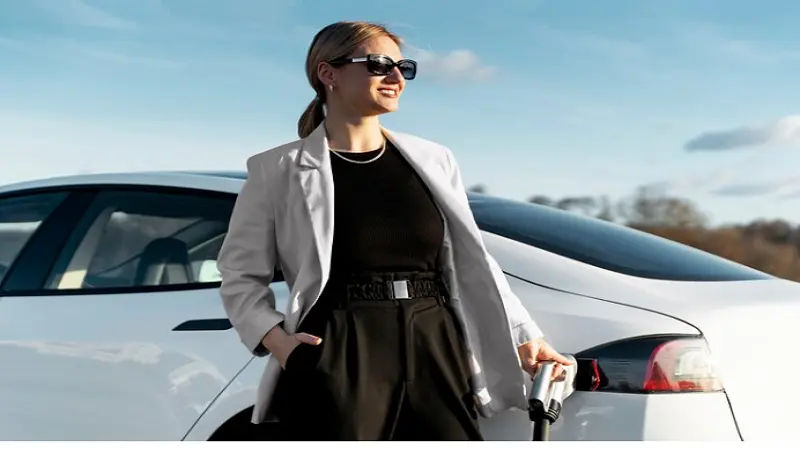In recent years, the automotive industry has been undergoing a seismic shift, largely driven by advancements in artificial intelligence (AI) and automation. Tesla, a leader in electric vehicle technology, has taken bold steps in this arena, particularly with its Full Self-Driving (FSD) capabilities. In this article, we will delve into how Tesla’s Autopilot how autopilot fsd 10m teslaisaacsoncnbc is shaping the future of driving, the significance of its latest updates, and the implications for both consumers and the automotive industry at large.
Table of Contents
ToggleThe Genesis of Tesla’s Autopilot
To truly appreciate where Tesla’s Autopilot is today, we must first look back at its origins. When Tesla launched its first Autopilot feature in 2014, it was a rudimentary version of what we see now. The system used a combination of cameras, radar, and ultrasonic sensors to assist with tasks like lane-keeping and adaptive cruise control. Over the years, Tesla has continually updated its software, making improvements based on real-world data collected from its fleet of vehicles. This approach has allowed Tesla to refine its FSD capabilities more rapidly than traditional automakers, who often rely on lengthy development cycles.
What is Full Self-Driving (FSD)?
Full Self-Driving is Tesla’s ambitious vision for a future where cars can navigate without human intervention. Unlike standard Autopilot features, which are primarily assistive, FSD aims to handle all aspects of driving. This includes complex maneuvers such as navigating city streets, making turns, stopping at traffic signals, and even parking itself. The key to FSD lies in its advanced neural networks, which process vast amounts of data in real-time, allowing the vehicle to “learn” from each driving experience.
Features of FSD
Tesla’s FSD package includes a suite of features designed to enhance the driving experience:
- Navigate on Autopilot: This feature allows the vehicle to navigate on highways, including interchanges and exits, with minimal driver input.
- Auto Lane Change: The car can change lanes automatically when it determines it’s safe to do so.
- Traffic Light and Stop Sign Control: FSD can recognize and respond to traffic signals, stopping at red lights and stop signs.
- City Streets Navigation: Perhaps the most groundbreaking aspect, this feature enables the car to drive on city streets, handling pedestrians, cyclists, and other vehicles.
- Summon: This allows the car to navigate in parking lots to come to the driver or park itself.
Continuous Improvement through AI
One of the most innovative aspects of Tesla’s approach is its commitment to continuous improvement. Unlike traditional automakers, which often rely on physical prototypes and static testing environments, Tesla gathers data from every car on the road. This means that each time a Tesla drives, it contributes to the collective learning of the neural networks that power FSD. In effect, every Tesla on the road is a participant in a massive data collection effort aimed at refining the driving experience.
The Latest Developments: FSD Beta 10M
As of 2024, Tesla released how autopilot fsd 10m teslaisaacsoncnbc Beta 10M, a significant update that has further pushed the boundaries of what autonomous driving can achieve. This version is packed with improvements and new features that enhance the car’s ability to navigate complex environments.
Enhanced Navigation Capabilities
With the 10M update, Tesla has made strides in how its vehicles interact with the surrounding environment. The neural network has been optimized to better understand traffic patterns, the behavior of pedestrians, and the nuances of urban driving. This means the vehicle can make better decisions when it comes to yielding, merging, or even navigating tight spaces.
Real-Time Data Utilization
One of the standout features of the FSD Beta 10M is its ability to process real-time data more effectively. The system can analyze traffic conditions, adjust routes on the fly, and predict potential hazards. This real-time adaptability is crucial for navigating busy urban landscapes where conditions can change rapidly.
User Feedback Integration
Tesla has always placed a strong emphasis on user feedback, and the 10M update is no exception. By closely monitoring how drivers interact with the FSD system, Tesla can make targeted improvements. For example, if users frequently disengage the system in certain situations, engineers can analyze this data to identify flaws and adjust the algorithms accordingly.
The Impact on Tesla Owners
For Tesla owners, the rollout of how autopilot fsd 10m teslaisaacsoncnbc Beta 10M represents a thrilling glimpse into the future of driving. With features that continue to evolve, many owners feel they are part of a unique journey toward fully autonomous driving. However, it’s important to recognize that, despite the advances, the system is not without its limitations.
Driver Responsibility
While FSD represents a significant leap forward, Tesla maintains that drivers must remain engaged and ready to take control of the vehicle at all times. This means that even with the most advanced features, the human element remains critical. Drivers are encouraged to use FSD as a tool rather than a replacement for attentive driving.
Cost Considerations
Tesla’s Full Self-Driving package comes at a premium price, which can be a deterrent for some consumers. However, many owners view this as an investment in the future, believing that as technology matures, the value of FSD will only increase. Additionally, the potential for increased convenience and reduced stress during long commutes is a strong selling point for many drivers.
The Broader Implications for the Automotive Industry
Tesla’s advancements in FSD have sparked a wave of interest and competition in the automotive industry. Traditional automakers are racing to develop their autonomous driving technologies, while startups are emerging with innovative approaches to AI-driven vehicles.
A Catalyst for Innovation
Tesla’s relentless pursuit of FSD has become a catalyst for innovation across the industry. Competitors are investing heavily in research and development, striving to catch up with Tesla’s advancements. This increased competition may lead to faster technological breakthroughs and a broader array of options for consumers.
Regulatory Challenges
As autonomous driving technology advances, regulatory challenges also come to the forefront. Governments around the world are grappling with how to regulate the use of self-driving cars, balancing innovation with safety concerns. This complex landscape will require ongoing dialogue among automakers, regulators, and the public to ensure that safety standards are met while fostering technological progress.
Shifting Consumer Expectations
As FSD technology continues to improve, consumer expectations will inevitably shift. Drivers may begin to prioritize vehicles with advanced autonomous features, influencing purchasing decisions. This shift could lead to an increased demand for electric vehicles, especially those equipped with cutting-edge technologies.
The Future of Driving
Looking ahead, the future of driving appears to be bright, particularly with advancements like Tesla’s FSD Beta 10M leading the way. The idea of a world where cars can navigate autonomously not only promises increased convenience but also has the potential to reshape urban planning, reduce traffic congestion, and improve safety on our roads.
Vision of a Driverless Society
Imagine a future where traffic accidents are significantly reduced due to the precision of AI-driven vehicles. Picture cities designed with pedestrians in mind, where the need for vast parking lots diminishes as vehicles can drop off passengers and park themselves. The vision of a driverless society is not just a fantasy; it’s a plausible outcome of the technological strides we are witnessing today.
Continuous Evolution
Tesla’s journey withhow autopilot fsd 10m teslaisaacsoncnbcis a testament to the fact that technology is continually evolving. Each iteration brings us closer to a world where driving is safer, more efficient, and less stressful. While we may not be there yet, every update, every improvement, and every data point collected contributes to this inevitable shift.
Conclusion
Tesla’s Full Self-Driving Beta 10M represents a significant leap forward in the realm of autonomous driving. While challenges remain, the progress made thus far indicates a future where self-driving cars could become a commonplace reality. As Tesla continues to innovate and refine its how autopilot fsd 10m teslaisaacsoncnbc capabilities, it sets the stage for a transformative shift in how we think about transportation. For Tesla owners and the broader automotive community, this journey is just beginning, and the possibilities are truly limitless.



